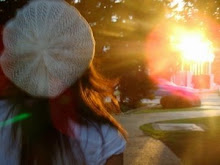
In Humanities, we are reading a war novel entitled "All Quiet On The Western Front". Paul Bäumer is the main character and protagonist in the story, who gives us an insight into life at the front. From how the author describes life through Paul's eyes before going off to war, we can tell he is just a young boy who has been drafted in to the army, with no experience or real knowledge of the cruelties of war. When he goes into war however, as a reader, we notice the changes in his tone of voice and in his actions. Sometime during the fighting and bombardments, we hear from Paul the friends that he has lost and how his very nature has changed just by directly living under wartime circumstances. He has to suppress all his feelings and inner self just to be able to survive through this war. "Just as we turn into animals when we go up to the line... so we turn into wags and loafers when we are resting... We want to live at any price; so we cannot burden ourselves with feelings which, though they may be ornamental enough in peacetime, would be out of place here. Kemmerich is dead, Haie Westhus is dying... Martens has no legs anymore, Meyer is..., Beyer is..., Hammerling...... it is a damnable business, but what has it to do with us now — we live." Also, there is a part in the room where he returns back home on leave and tries to sit down and enjoying reading a book. He reads a few lines and cannot push himself to go any further. He found it difficult to extract any pleasure in the spare time he has to simply read, which was a favourite pastime of his before going to war. In the short time of fighting, Paul Bäumer has had to learn to give up his young adolescent childhood to go straight to the full understanding of the horrors and devastation of war, to a point where he almost has to detach himself from the norms of society and inescapably, his own soul.
Thursday 19 February 2009
Character analysis: Paul Bäumer
Posted by Jenai at 22:55 0 comments
Labels: Humanities
Tuesday 10 February 2009
We All Live In The YELLOW SUBMARINE
 Today Mrs. Smith planned another Smash Day for us instead of the usual science class. Out of 10 sheets of scrap paper, 4 little mirrors, tape, and a piece of cardboard, each group of either 2 or 3 was to build a periscope-like device that would allow us to see what a box contained. The box would be placed on the table, while we all had to remain lower than the surface of the table. (Of course she had planned out a little story for us to play out: we were in a submarine to spy into a castle on land to see what was inside without letting the guards around the castle caught sight of us.) Hence, the rule that did not allow us to rise above the surface of the table.
Today Mrs. Smith planned another Smash Day for us instead of the usual science class. Out of 10 sheets of scrap paper, 4 little mirrors, tape, and a piece of cardboard, each group of either 2 or 3 was to build a periscope-like device that would allow us to see what a box contained. The box would be placed on the table, while we all had to remain lower than the surface of the table. (Of course she had planned out a little story for us to play out: we were in a submarine to spy into a castle on land to see what was inside without letting the guards around the castle caught sight of us.) Hence, the rule that did not allow us to rise above the surface of the table.
Posted by Jenai at 04:20 0 comments
Labels: Science
